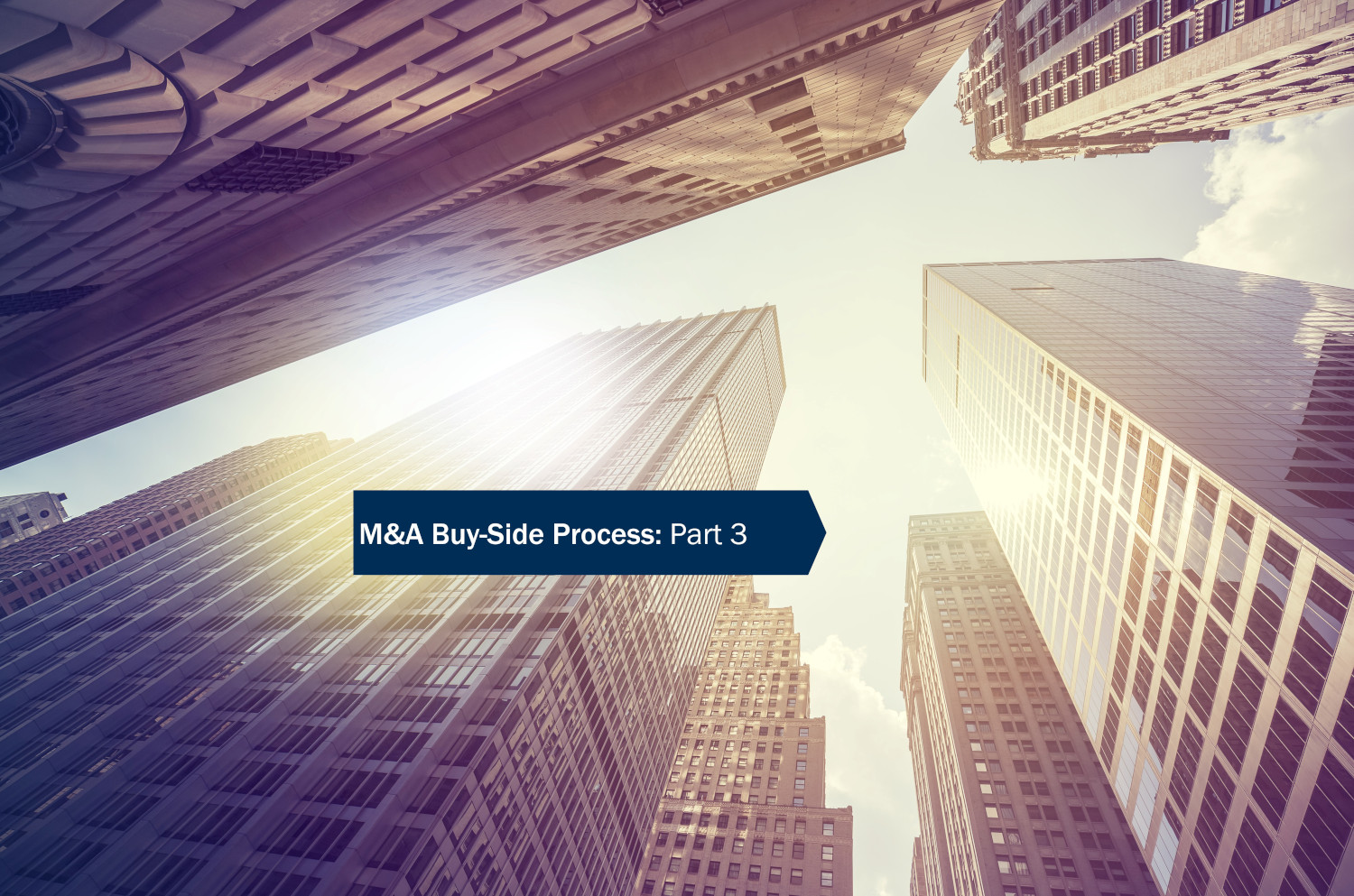
GETTING YOUR BUY-SIDE DEAL DONE – Due Diligence
As you have been following our blog series “Getting your buy-side deal done” Part 1 – first steps of the buy-side process – and Part 2 – indicative offer – you know exactly what to prepare for a buy-side process and your client appreciates the very structured and professional manner with which you handle the M&A process. However, weeks are passing and still no sight of the perfect match. Covid-19 also struck your city and you are fixing the printer this time in your home office as suddenly your phone rings. The golden fleece was found. Everyone is super happy. Some weeks later the target wants to proceed after receiving the indicative bid that you have prepared and brings us to our today’s topic, due diligence (DD).
The Purpose of Due Diligence
The main goal of the due diligence is to confirm the assumptions that were made in your indicative bid or non-binding offer based on the information you received earlier in the process from the selling company, investigate potential material impacts through a change of ownership and verify that the business is sound. As an M&A buy-side advisor, your main task is to coordinate the individual parties of the buy-side DD team such as lawyers, auditors and tax advisors ensuring a swift DD process. Depending on the target’s individual situation, the DD scope can slightly vary but in general, the following topics are of relevance:
- Core topics: financial, legal, tax, commercial
- Additional important topics: environmental/ESG, IT, market, HR, IP, integration/transition, GDPR, etc.
Setting the Timeline
When coordinating the whole process, you will first come up with a timetable, unless the target is in a structured sell-side process, or also called auction process, dictating the timeline and steps (process letters 1 and 2). This is to frame the starting point when all the information in the virtual data room (VDR) is available for analysis and when all meetings, calls and (virtual) site visits as part of the due diligence should take place. This timetable should be thoroughly thought through and be confirmed by the seller to have the necessary resources used most efficiently. The key is to have a realistic timeline in the range of 4-8 weeks depending on the size and stage of the target as well as to keep an eye on the progress in accordance with your timeline.
Commencing Due Diligence
Once the timeline is set, the due diligence usually starts with the seller opening the VDR containing all the information the buyer wants to know about. Having access to the VDR, the advisors can analyse all the information in the data room and start to formulate sets of questions that will be answered in calls and or meetings as defined by your timeline. In some cases, the seller has prepared a vendor due diligence (VDD) that facilitates and speeds up the whole process. This is often a weighty tome prepared by a 3rd party such as auditors or advisors hired by the seller when running a structures sell-side process.
Coordinating the Buy-Side Due Diligence Process
Regardless of whether there is a VDD report in place or not, you as the coordinator have to keep the overview of the whole process, brief the advisors involved in advance, lead the individual DD teams, and ensure that the seller does not lose patience, especially if the seller is not in an auction process and the scope of the DD is regarded as more complex and very detailed. Having to manage double-digit DD streams can be challenging and demanding for both parties. Depending on the buyer’s size and ability some of the DD topics are taken care of “in-house” which does not necessarily always makes the coordination and the DD process easier. However, what can make your life easier is that remote DD procedures found more acceptance, especially as of this year, saving potentially a lot of travel time. Having a drone doing the site visit for you from your comfortable chair can be a plus.
Once the VDR has been analysed from top to bottom and reverse, all sites visited, all questions asked and answered to everyone’s satisfaction, the due diligence is finished and the responsible parties provide their findings. Depending on the topic and the scope, they provide a very detailed report outlining their findings and analysis, issuing a so-called DD report.
Now, having managed the whole DD process very successfully and having ensured that everything played out according to your initial timeline, everyone is happy. During the due diligence, no major red flags or deal breakers were identified taking your team and you closer to getting another deal done. Potential findings during the DD are usually reflected in a revised bid or binding bid and are translated into the share or asset purchase agreement, later on, however, this is a different topic.
The latest information about MP
Ready to start?!
Our teams of specialised dealmakers and ambitious M&A
challengers, are ready to take on your challenge – and exceed your expectations, every day.
- Market leader in industrial M&A
- 700+ industrial M&A projects
- 75+ professionals form the largest industrial M&A team
- Adding credibility to your deal
- Maximising your value with our challenger mindset



